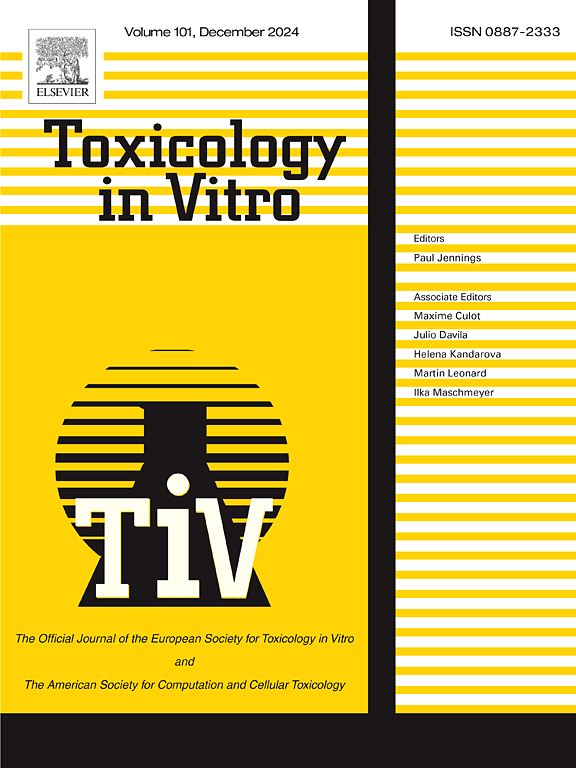In vitro toxicity of two functionalized reduced graphene oxide materials with potential application in food packaging
IF 2.6
3区 医学
Q3 TOXICOLOGY
引用次数: 0
Abstract
Functionalized graphene materials have been proposed as nanofillers in food packaging applications as they improve the characteristics of the resulting nanocomposites. But food contact materials require a toxicity evaluation previous their authorization and use. In this sense, reduced graphene oxide functionalized with dodecyl amine (DA-rGO), and [2-(methacryloyloxy) ethyl] trimethylammonium chloride (MTAC-rGO) were characterized and their internalization and cytotoxicity in Caco-2 and HepG2 cultures evaluated. Cell viability decreased from 100 μg/mL in all experimental trials, and oxidative stress by means of a reduction in glutathione levels was evidenced as one of the potential toxicity mechanisms involved. Moreover, both materials were subjected to an in vitro digestion process to investigate their potential changes along the gastrointestinal tract. Digested samples were characterized, and the cytotoxicity also evaluated showing an exacerbation. These results raise concerns about the impact of these materials after oral exposure, and therefore further research is necessary.
具有食品包装应用潜力的两种功能化还原氧化石墨烯材料的体外毒性。
有人建议将功能化石墨烯材料作为食品包装应用中的纳米填料,因为它们能改善所产生的纳米复合材料的特性。但食品接触材料在授权和使用之前需要进行毒性评估。为此,研究人员对十二烷基胺功能化的还原氧化石墨烯(DA-rGO)和[2-(甲基丙烯酰氧基)乙基]三甲基氯化铵(MTAC-rGO)进行了表征,并评估了它们在 Caco-2 和 HepG2 培养物中的内化和细胞毒性。在所有实验中,细胞存活率从 100 μg/mL 开始下降,谷胱甘肽水平下降导致的氧化应激被证明是潜在的毒性机制之一。此外,还对这两种材料进行了体外消化处理,以研究它们在胃肠道中的潜在变化。对消化后的样本进行了特征描述,并对细胞毒性进行了评估,结果显示细胞毒性有所增强。这些结果引起了人们对这些材料经口接触后的影响的关注,因此有必要开展进一步的研究。
本文章由计算机程序翻译,如有差异,请以英文原文为准。
求助全文
约1分钟内获得全文
求助全文
来源期刊

Toxicology in Vitro
医学-毒理学
CiteScore
6.50
自引率
3.10%
发文量
181
审稿时长
65 days
期刊介绍:
Toxicology in Vitro publishes original research papers and reviews on the application and use of in vitro systems for assessing or predicting the toxic effects of chemicals and elucidating their mechanisms of action. These in vitro techniques include utilizing cell or tissue cultures, isolated cells, tissue slices, subcellular fractions, transgenic cell cultures, and cells from transgenic organisms, as well as in silico modelling. The Journal will focus on investigations that involve the development and validation of new in vitro methods, e.g. for prediction of toxic effects based on traditional and in silico modelling; on the use of methods in high-throughput toxicology and pharmacology; elucidation of mechanisms of toxic action; the application of genomics, transcriptomics and proteomics in toxicology, as well as on comparative studies that characterise the relationship between in vitro and in vivo findings. The Journal strongly encourages the submission of manuscripts that focus on the development of in vitro methods, their practical applications and regulatory use (e.g. in the areas of food components cosmetics, pharmaceuticals, pesticides, and industrial chemicals). Toxicology in Vitro discourages papers that record reporting on toxicological effects from materials, such as plant extracts or herbal medicines, that have not been chemically characterized.
 求助内容:
求助内容: 应助结果提醒方式:
应助结果提醒方式:


